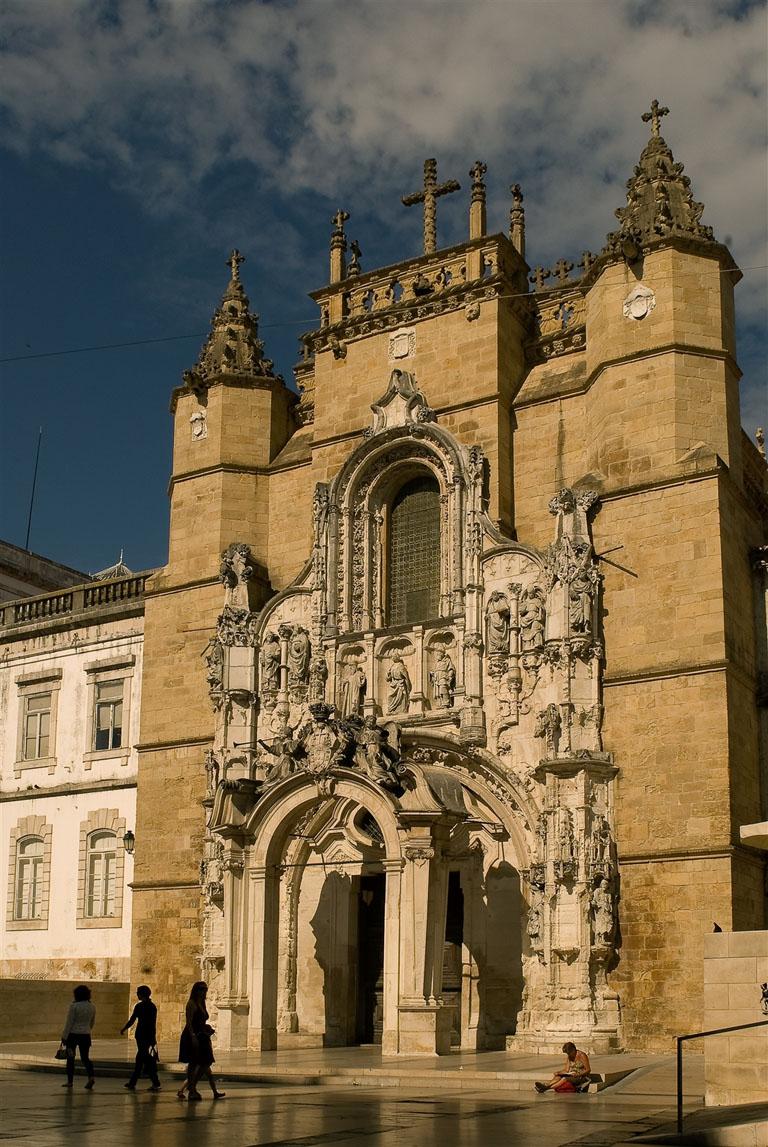
Igreja de Santa Cruz - Panteão Nacional
Presentation
The monastery was begun in 1131 under the patronage of Dom Afonso Henriques, and conceded to the order of the Canons Regular of St. Augustine. Among the notables who attended the school of the monastery was St António of Lisbon, who took orders in Coimbra who took vows as a Franciscan monk in Coimbra. The Romanesque church was designed by the French master builder Roberto.
Observations
Of the works commissioned by King Manuel I, we highlight the vaulting, attributed to Master Boitaca, and the remarkable stalls, dating back to 1513, crowned with decoration alluding to the Portuguese discoveries. The king also commissioned Nicolau Chanterenne for the overlaying of the royal tombs in the style of the Renaissance.
The bodies of Afonso Henriques and Sancho I, the first kings of Portugal rest in elegant tomb caskets in the chancel of the church, which is now the National Pantheon.
The facade of the monastery combines Romanesque structural elements with 16th-century decoration around the main portal. The Triumphal Arch in front of the church entrance dates from the 19th century. Behind the monastery buildings is the lovely Manga Cloister, a pure and beautiful example of Renaissance that is rarely surpassed. Formerly known as the Fonte da Manga, it formed the centrepiece of one of the three cloisters of the monastery. The 16th-century Cloister of Silence is Manueline.
Igreja de Santa Cruz - Panteão Nacional
Praça 8 de Maio - 3000-300 Coimbra







